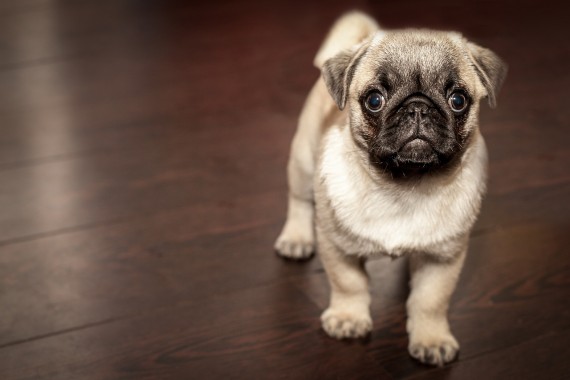How can I stop my dog from going to the toilet indoors?
 A common reason that many dog owners decide to bring their pets for behaviour therapy training is that they are struggling with toilet trouble. However to solve this problem, we must first understand the reasons behind why their dog might be repeating this kind of behaviour.
A common reason that many dog owners decide to bring their pets for behaviour therapy training is that they are struggling with toilet trouble. However to solve this problem, we must first understand the reasons behind why their dog might be repeating this kind of behaviour.
While it is common for puppies to need toilet training, and relatively easy to teach them, it is not uncommon for dogs of an older age to either not be trained in the first instance (especially if they have been housed outdoors) or for them to develop problems later on in their lives, perhaps through fear or anxiety or even illness.
Awareness
Many dogs will poo or pee indoors simply because they are not used to going to the toilet outdoors, such as in the case of puppies, or because they don’t know where the toilet is, for example if they have been re-homed.
In this case it is important that the puppy or dog can identify where the toilet is and that you reward appropriate behaviour by treating him or her for using the correct place to toilet.
It’s also important that you are able to detect when your dog needs the toilet. Signs such as circling, sniffing and general agitation might mean that they need the toilet and will generally need to go after a sleep, after they have eaten, or after play-time.. So be on the lookout and offer them a chance to go outside to use the toilet.
Emotional reasons
Sometimes, there can be deeper reasons behind a dog going to the toilet indoors, in particular because of negative feelings such as fear, anxiety, stress and boredom.
Dogs are very emotional and they rely on their owners for safety and comfort, so it is natural for their emotions to get the better of them when they are left alone for periods of time.
The easiest way to help your dog adjust to you being away from home is to build up their coping skills through interval training. This means spending just a few minutes away from them several times a day to gradually building up to much longer periods of time. If your dog is particularly fearful then leaving a radio on can help them to be less fearful of exterior noises such as traffic or post being delivered and you can try building a pattern of repetition for them by providing them with a treat, such as a dog biscuit, before you leave the house.
Don’t forget that dogs have a strong sense of smell, so making sure that you thoroughly clean up their mess can stop them from coming back to the same spot each time.
In a small number of cases where dogs don’t respond to natural training methods anti-stress medication might be prescribed.
Illness
If a dog that has been house trained and accustomed to using the toilet outside but then suddenly begins to go to the toilet inside then you should take them to the vets as this could be an indication of illness.
Punishment isn’t helpful
While it can be frustrating for you as an owner to have to deal with your pets mess, they are not to blame and punishing them can actually do more harm than good. Often the fear and anxiety that a dog naturally feels when it’s ‘parents’ are out of the house leads them to soil indoors, but by the time their owners return and decide to punish the dog, the dog has forgotten and so is left confused as to why it is being punished. This only increases the chances of the dog becoming more anxious in future and therefore soiling indoors more often.
Consistency and communication are vital in training a dog, whether as a puppy or as an adult. The best way to solve any problems you might have is to seek the support of a professional dog therapist.
For more information about our dog training classes, please visit https://www.witsend4pets.co.uk/, read our article “Dog training: what you need to know”, or call us on 0116 244 2455.